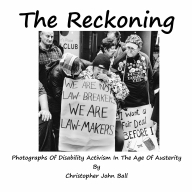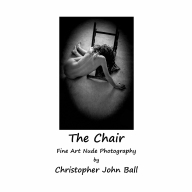
Guidelines for Health and Safety Procedures with Relation to Photography Compiled by Christopher John Ball:

Tweet
Before Starting Work in the Darkroom and Turning Off the Main Lights.
Make sure all work surfaces are clean and free of debris, litter etc.
Put any bags or belongings away from these work areas.
Remember the darkroom is a low light, and even no light, working environment. So store coats, bags etc. where they cannot be tripped over. Under the enlarger bench is a good place.
Make sure that the equipment you intend to use are clean, dry and to hand.
Turn on any extractor fans.
Check that the enlarger bulb is working.
Check that the chemicals you wish to use are fresh.
Mix any chemicals you need and place them in the correct apparatus, for example printing trays, before turning off the main white light.
Do not take food or drink into the darkroom.
Correct Use of Chemicals in the Darkroom.
Always keep chemicals away from the dry benches and electricity.
Water based chemicals and electricity do not mix and can be lethal.
Do not touch electrical equipment, enlargers, timers etc. with wet or damp hands.
This is one of the reasons darkrooms are built with a dry bench area, for enlargers etc., and a wet bench area, for chemicals, printing trays, developing tanks etc.
Do not walk around carrying chemicals in printing trays, developing tanks etc. You can spill them and cause the floor to become slippery.
Wear protective gloves if possible, if not, avoid prolonged contact with photographic chemicals. If you have sensitive skin take special care. When printing use printing tongs.
When you have finished wash your hands.
Take care not to put fingers in or near your mouth and do not rub your eyes.
If you get chemicals in your eyes, via a splash or rubbing your eyes, use an eyewash and seek medical attention. Take the chemical bottle, showing label, with you when you visit Doctors.
If you have a cut or a graze on your hand protect it with a waterproof plaster. After you have finished working in the darkroom remove the plaster as it may have chemicals on it.
When pouring chemicals take care not to splash.
Always wipe up any spillage right away.
Using Photographic Lighting Equipment Safely
Always uncoil all electricity cables, do not leave them wound on any storage spool. If you do this the coiled cable gets hot and there is a serious risk of fire.
Tape down, using strong ' gaffer ' tape. This prevents people tripping up on loose cabling.
Always use the correct lighting stand for the photographic lighting you are using.
Do not over reach/raise the lighting stand, this can cause the stand to tip over.
Please remember that photographic lights, particularly tungsten, can get very hot. Do not over balance them. If they fall onto a model, for example, they can cause horrific burns to skin.
If they fall whilst unattended there is serious risk of fire.
If adjusting ' barn-doors ' etc. on tungsten lighting ALWAYS use protective gloves.
After you have finished, allow the lighting equipment to cool down before moving.
Always use the correct fuse specified for the equipment you are using.
Do not over load electricity supply/circuit.
July 2024 Several books, featuring Christopher John Ball's photographs, are now available through Amazon or click on an image below to purchase via secure payments on lulu.com

Tweet








